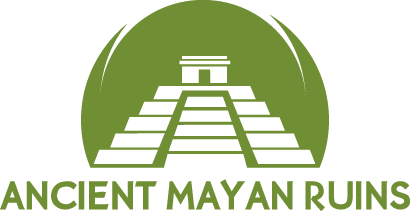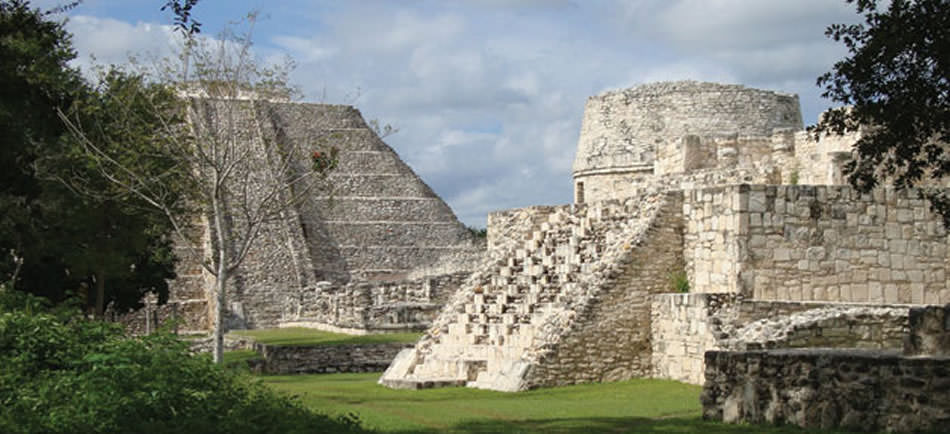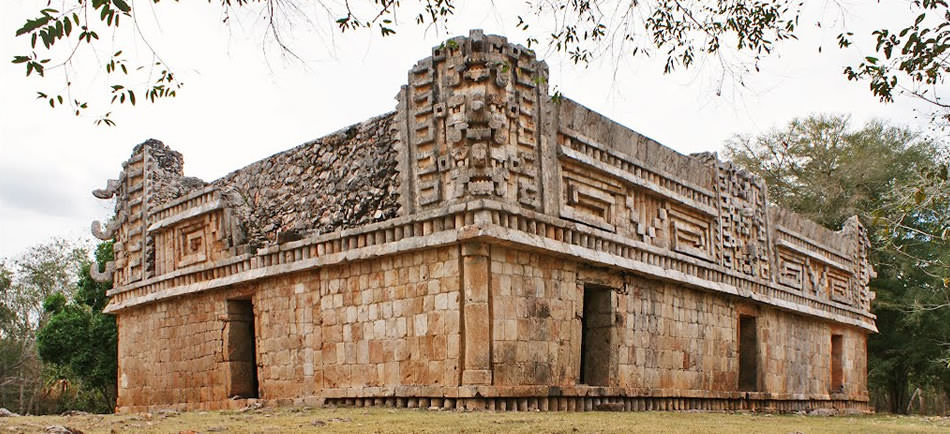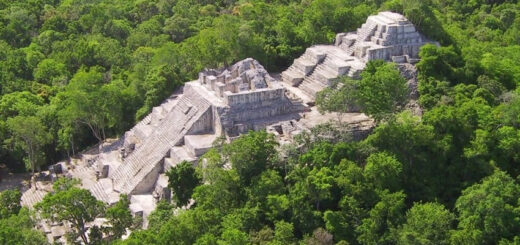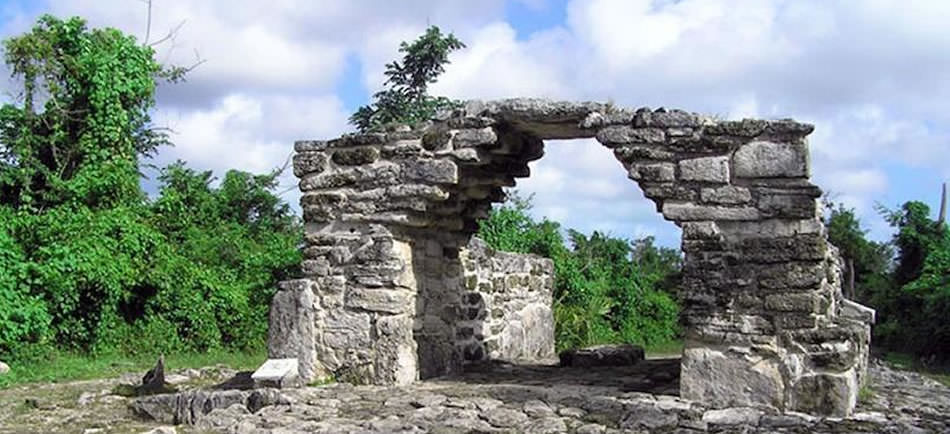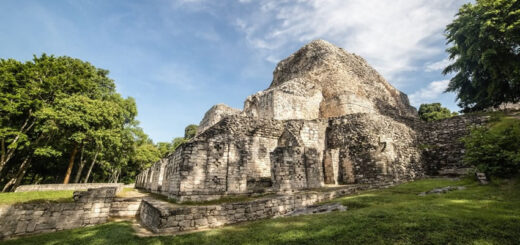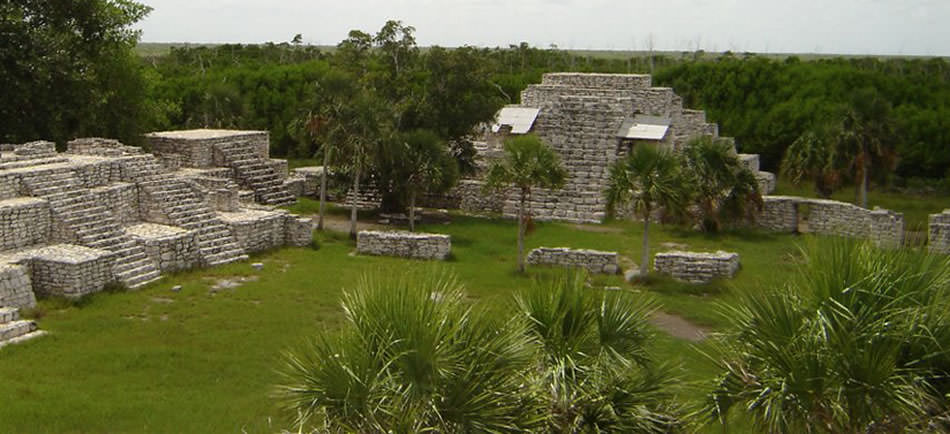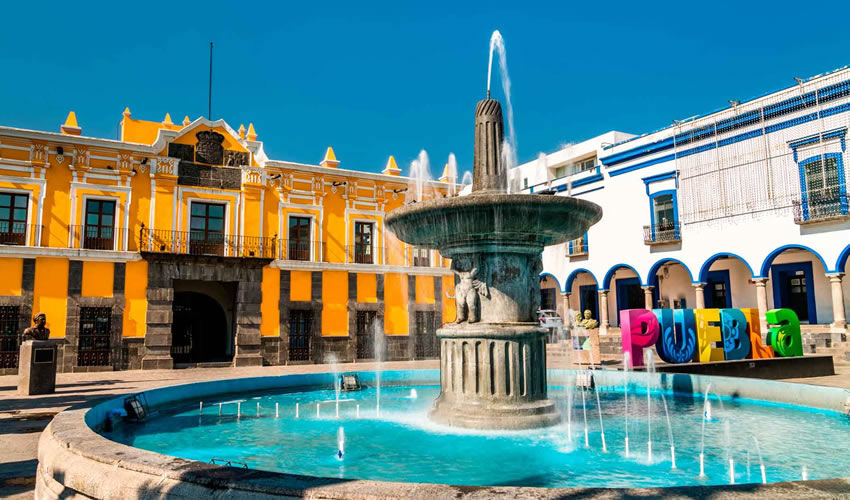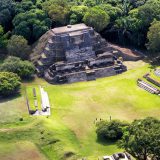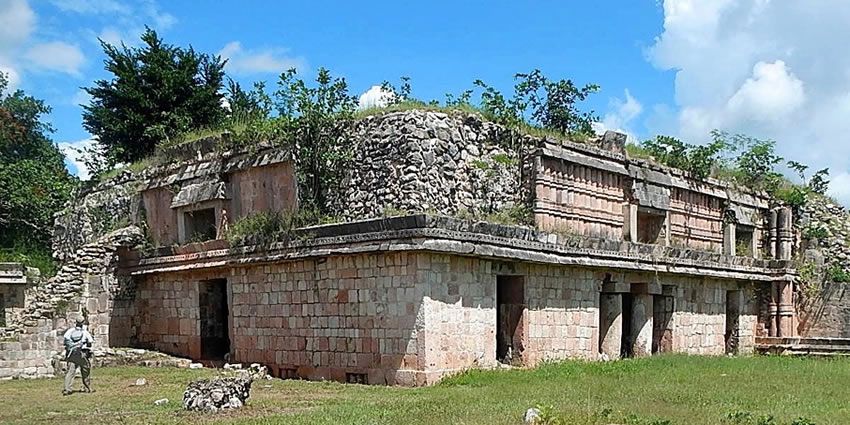
Chacmultún
Chacmultún is a hidden gem waiting to be discovered by curious travelers alike. This ancient Mayan city offers a unique glimpse into the past with its striking red-stone buildings and intricate architectural details.
“Chacmultún” means “Mounds of Red Stone”. The site features characteristic red-colored stone structures, whose hue is caused by the iron oxide of the limestone, add a unique visual appeal to its architecture.
Visitors to Chacmultún can explore well-preserved structures, including the Temple of the Sculpted Columns and the Palace of the Two Ceibas, each telling a story of the Mayan civilization’s ingenuity and artistry.
Chacmultún promises a memorable and enriching experience, allowing visitors to immerse themselves in the tranquility and mystery of this ancient place and promising a unique and enriching journey into the past.
Geography and Environment
Nestled amidst the lush forests of Yucatán, Chacmultún is surrounded by a landscape rich in biodiversity. The site is set atop a series of hills, offering visitors breathtaking panoramic views of the surrounding jungle.
This elevated position of the site provided strategic advantages to its ancient inhabitants. The natural environment of the Chacmultún area is teeming with flora and fauna, making Chacmultún a treat for nature lovers.
Best Time to Visit Chacmultún
The ideal time to visit Chacmultún is during the dry season (from November to April). During these months, the weather is typically warm and pleasant, with minimal rainfall, making it perfect for exploring the ruins.
The dry season offers comfortable temperatures ranging from 20°C to 30°C, allowing for leisurely walks and ample time to soak in the site’s historical significance and natural beauty.
The rainy season in this region spans from May to October and brings higher humidity and frequent showers, which can make the terrain slippery and less enjoyable to navigate.
History and Chronology
Chacmultún’s history dates back to the late Classic period of the Mayan civilization, around 600 CE. The city experienced its peak between 800 and 1000 CE, a time marked by extensive construction and the flourishing of its unique architectural style.
Key historical milestones include the construction of significant structures like the Temple of the Sculpted Columns and the Palace of the Two Ceibas, which highlight the city’s role as a significant ceremonial and administrative center.
The city’s decline began around the 10th century, likely due to a combination of environmental factors and social upheavals.
Modern History (Rediscovery)
Chacmultún was largely forgotten after its decline until its rediscovery in the 19th century.
The site first came to the attention of Western scholars and explorers in the 1880s, with early documentation and sketches made by explorers like John Lloyd Stephens and Frederick Catherwood.
Systematic archaeological studies began in the mid-20th century, leading to more detailed understanding and preservation efforts. Today, ongoing excavations and conservation work continue to reveal new insights into the history and culture of this remarkable ancient city.
Chacmultún Archaeological Zone
Chacmultún offers a glimpse into the grandeur of the ancient Mayans. Chacmultún provides a serene and relatively untouched experience, making it a hidden gem for history enthusiasts and adventurous travelers alike.
At Chacmultún, you’ll encounter a variety of architectural marvels that showcase the ingenuity of ancient Maya builders. The main features include impressive pyramids, expansive plazas, and intricately designed palaces.
One of the standout structures is the “Palace of the Stuccoes,” renowned for its stucco decorations. Another notable structure is the “Great Pyramid,” which offers a commanding view of the site and its surroundings.
Numerous altars and stelae serve as silent witnesses to the ceremonial and ritualistic practices that once took place here. These artifacts provide valuable insights into the social, religious, and political life of the Mayans.
How to get to Chacmultún Ruins?
The nearest towns and villages:
- Tekax is located approximately 10 km away.
- Ticul is situated about 45 km from Chacmultún.
- Mérida is around 120 km away from the ruins.
Mérida offers a wider range of amenities and transportation options.
To reach Chacmultún:
- From Tekax: Hire a taxi or drive to the ruins.
- From Ticul: Take a bus or drive towards Tekax.
- From Mérida: Drive to the ruins, or take a bus to Tekax.
Tourist Information
- Chacmultún Ruins are open to visitors from 08:00 to 17:00 daily.
- The entrance fee is generally modest, around 75 MXN (2024).
What to bring and what to wear?
Bring water and snacks to ensure you stay hydrated, as exploring the ruins can be physically demanding, especially in the heat. Light snacks or energy bars can keep you fueled during your visit to the Chacmultún ruins.
Lightweight, breathable clothing will help you stay cool in the heat. Long sleeves and pants can help protect against insect bites. Sturdy, comfortable shoes, suitable for walking and climbing, as the terrain can be uneven.
Use a wide-brimmed hat and sunglasses to shield yourself from the sun.
- The area can have mosquitoes, so bring repellent to avoid bites.
- Remember to respect any rules regarding photography.
